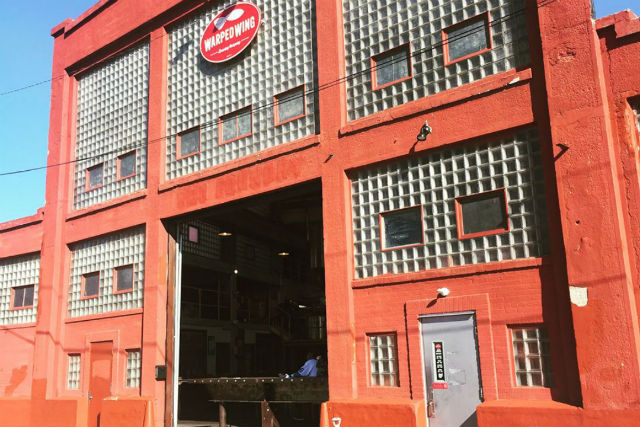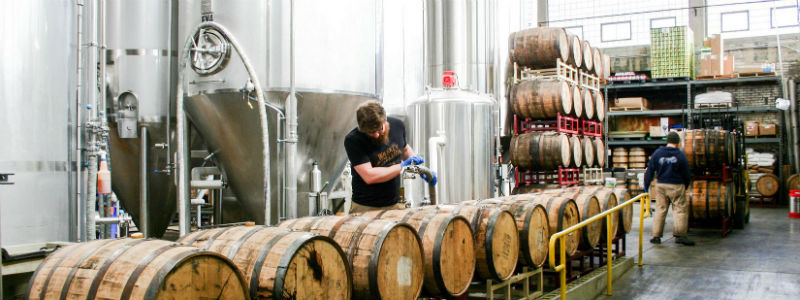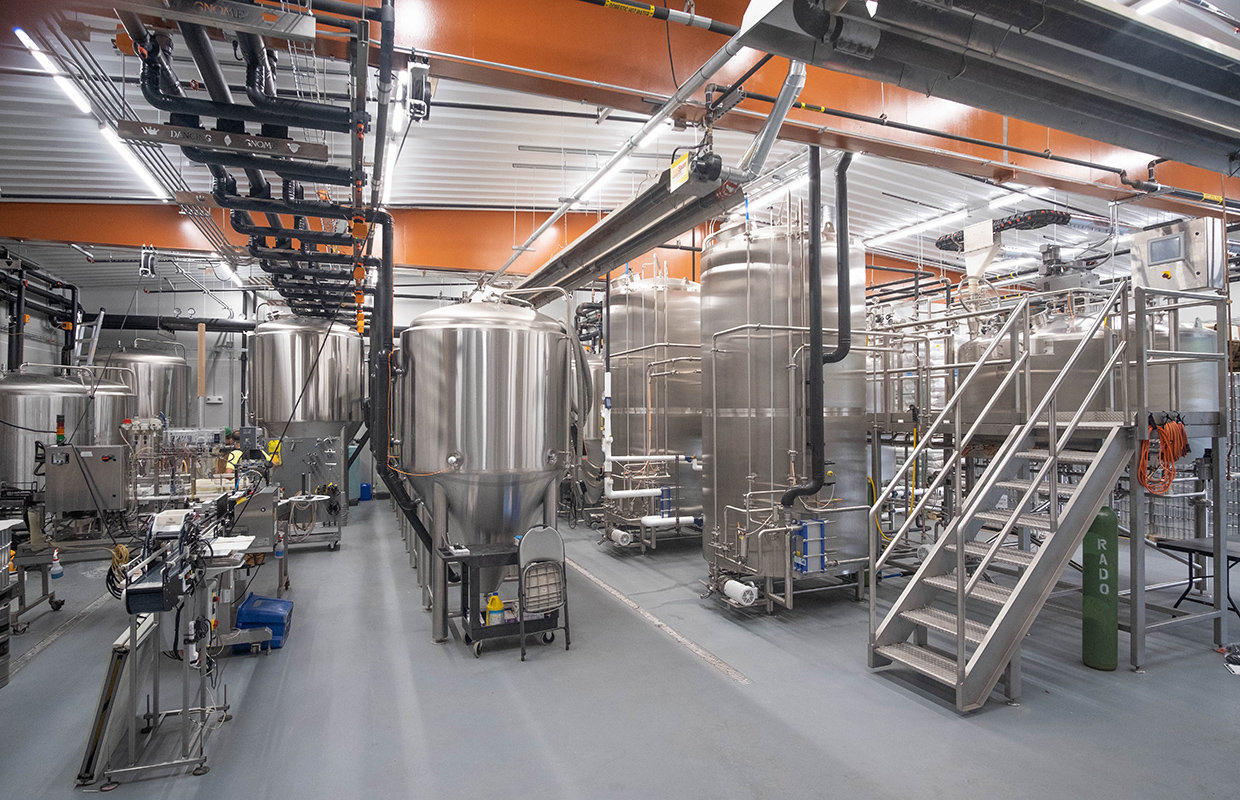
In a continuing series about malt storage with breweries across the country, we stop in Dayton, Ohio, where Warped Wing does not currently have a grain silo simply because they are looking at having to potentially relocate the brewery since they are outgrowing their current space, said Warped Wing co-founder and Brewmaster John Haggerty.
“Until we have a better handle on if or when that move is happening I have not been inclined to install the equipment necessary to support a silo,” he explained. “However, we expect that a return on investment to be less than two years based upon the price savings we should be able to achieve on the malt price per pound at current pricing and malt usage rates.”
BREWER: As your brewery has grown, what sort of steps have been taken to improve the logistics and efficiency in ordering malt?
HAGGERTY: We order malt on a monthly basis. An inventory evaluation is done mid-month for what we have on hand versus what is left to produce in that given month. We then look at what our shortfall will be for the following month and order accordingly. Pretty simple really. We will try to round up on base malt orders for even pallets as you can always use it and it also helps in case we have changes. The big change for us is that as we have run out of room in the brewery we have had to go to an off-site warehouse. This requires an almost daily conversation between the brewery staff and the warehouse staff so that we have what we need without having to store an inordinate amount of malt at the brewery. We have not yet gone to bulk malt but will be looking to over the course of the next 12 months or so.
BREWER: How has malt storage on site changed for you as you have grown?
HAGGERTY: It has virtually evaporated. We have almost no room to store malt on site anymore. So, we typically are getting a delivery from our own warehouse daily if not multiple times per day. By the way, the malt storage is not the primary reason for the warehouse — we self distribute our beer and; therefore, have a fair amount of demand for warehouse space as it is. So, storing malt at the warehouse simply uses space that we already have there.
BREWER: Do you have a base malt for the majority of your brands? Was that always the case? Did your portfolio change at all to be able to have a more bulk order of one base malt?
HAGGERTY: We use four different base malts. Pilsner and 2 row are the primary ones. However, we also have a couple of brands that use Pale Ale malt and one brand that uses Munich malt as a base. The Munich malt base beer will probably always remain that way as I feel it makes a distinct difference in that beer. However, the Pale Ale malt will probably go away entirely as we move into bulk malt storage.
BREWER: How did you factor in things like weather, logistics and other such things when figuring out new storage areas?
HAGGERTY: With bag malt weather and logistics are not to tough to deal with and so haven’t really been in the equation. I always try to order in whole skid increments if possible as freight is charged by the skid typically. In regard to malt silo/bulk storage; however, weather can have an impact. Snow and ice on load cells can cause inaccurate readings so it is good to have some other means of verification for remaining inventory. Typically I also try to manually track what should be left in a silo when I have had silos in the past.
More on malt storage with Cape May’s Jimmy Valm here and Track 7’s Ryan Graham here.
Read more about silos and malt storage in the March/April issue of Brewer Magazine.







1 Trackback / Pingback